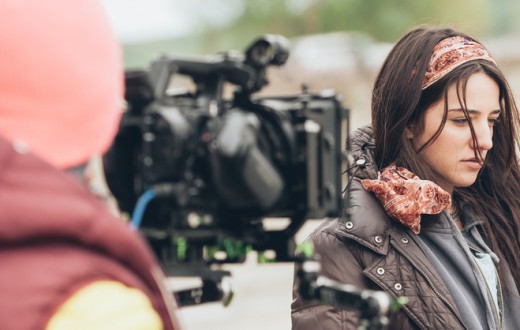We spend a lot of time talking about–and let’s be honest, stressing about–monologue auditions. It makes sense that our focus would be there of course; after all, generally speaking the monologue audition is the first step. It’s the initial test that earns you the right to compete at the next stage for a role. So clearing that hurdle has to be the primary focus–at first.
But really, when you get down to it, the monologue audition isn’t so much an assessment of your acting ability with all of its nuance and depth as it is for the casting team to determine that you look like what your headshot looks like, and that your apparent age matches what you claim. It’s to make certain that you didn’t Photoshop your actual face into oblivion, or that you haven’t put on 50 pounds or gotten cornrows since you last had headshots done.
That, and to determine that you can remember and perform 90 seconds of script without peeing your pants.
So let’s assume we’re past the point of asking for a roll of paper towels for what you did to the audition room floor. Now what? How can we optimize our chances at the next stage of the audition process–reading sides with another actor or with a reader? Here are a few ideas for making the best impression possible in a dialogue audition.
1. Research
Often what makes people most nervous about dialogue auditions is their unfamiliarity with the sides. We’re usually only given sides the night before a read or even on the spot at the audition, so it’s understandable that it makes people anxious. But if they just gave you the sides, of course you don’t know the lines. You’re not going to know the lines, not today anyway, and they know this. So let it go. The trick is to focus instead on your research rather than on the lines themselves. In whatever time you do have to prepare prior to the day, you should already have gotten some idea of the character and why the casting team is looking at you, right? You should have some idea of how he or she fits into the story and what his or her relationships are like with the other characters, and you should have some clue as to the overall story. Given all that, you should already have made some decisions about how you think you might approach playing this character–there’s a reason you’re here: for your particular style, demeanor, and what you bring to the table creatively! So if it isn’t a situation where you have time to get off-book, don’t sweat the lines so much as the character, and your objectives as that character.
2. Past is prologue
In keeping with doing your research, it’s vital that you figure out what just happened in the moment before the scene you’re reading. Ask if you have to. This isn’t a stupid question, especially if they’ve just handed you the sides for a piece you’re not completely familiar with. Not only is it not stupid, it’s a smart question: it shows the casting team that you understand that every moment in a script, every moment in the arc of a character depends on every moment that has gone before. This scene isn’t taking place in a vacuum, even if you are being asked to read it in one. And when you do go to read, take a moment before you begin to get your head in that space of the moment that has gone before. Visualize the room, the other characters, the time of day, etc. This is the point where you get to actually act, so take advantage of it!
3. Oh those damn pages
Another common source of tension for actors going to a dialogue audition is how to handle having their sides in hand for the read. First of all, relax. As mentioned above, the casting team realizes you aren’t off-book. They’re the ones who handed you those sides mere seconds ago. You’re SUPPOSED to be looking at your sides; that’s how this is done at this stage of the game. That said, a couple tips: hold the pages out in front of you, but make sure you aren’t covering your face. “Of course,” you say, laughing and shaking your head at such a tragically basic tip. But you’d be surprised how many actors get caught up in reading that next line, and the next, and the next, and before you know it the casting team is looking at a bright white square of paper where the actor’s face used to be. Speaking of which, how much should you be looking at the sides? As much as you need to in order to get the lines while still connecting with your scene partner. One great tip for how to approach this is to think of the other actor or reader as being connected to you via a rubber band. You may look down at your lines, but you will get back to that connection just as soon as possible. Keep your thumb or finger alongside the next line on the page so you don’t get lost, but if you do get lost don’t freak out. Part of this audition is seeing how you handle the stress of this type of reading, how well you stay in character, and how you deal with the unexpected. Remember your improv training and stay in the moment–and make sure you stay connected to your reader or scene partner.
4. Careful! With the… <beat> PUNCTUATION!!!
The temptation when reading something unfamiliar is to grasp at any clue the text gives you as to what is happening. To this end, one common mistake actors make at this type of reading is to take punctuation and other directions way, way too literally. First of all, exclamation point doesn’t necessarily mean SHOUTING! It can mean indignation, alarm, surprise, shock–a million other reactions besides raising your voice to the point where you scare the people in the offices two floors up. In fact, this initial reading on exclamation points is so common among actors that if you make another choice–any other choice–when you encounter an exclamation point, you will make an impression. Same goes for words in all caps: as often as not, this is a way for the writer to emphasize a word, not a request the actor turns the volume up to 11. By the same token, indications of a beat or ellipsis don’t give you carte blanche to take a five-second dramatic pause. You have to keep the scene moving. We should always respect the writer’s words, and do our best to say the lines letter perfect. But, and especially at a dialogue read that’s using sides that aren’t terribly familiar to you, character and staying connected in the moment with your scene partner has to be the priority.
Most of all, relax, be yourself, and have fun. You’ve already made it to the second round, so that means you’re doing something right!







